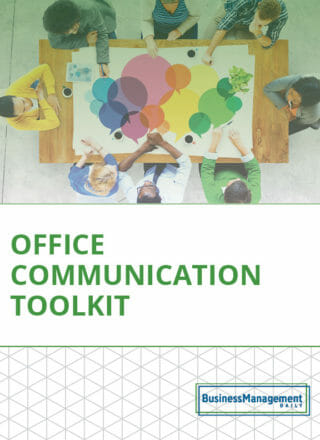Types of workplace conflict and how to handle them
Conflict in the Workplace: Causes, Consequences, and Prevention
Like any group, people who work together sometimes experience conflicts. Hopefully, those involved can resolve their differences or agree to disagree. However, prolonged tensions or handling matters in unsuccessful ways set up the warring parties for problems and put the whole work environment at risk.
Frequent conflict in the workplace jeopardizes an individual’s job satisfaction and performance. It is difficult to focus and do one’s best work when constantly feeling at odds with someone else. Emotions aroused can affect physical and mental health.

Conflict also drains those who witness it. Colleagues may feel uncomfortable watching arguments or pressured to take sides. Team cohesion suffers. Decreased productivity, reduced morale, absenteeism, and higher employee turnover can result.
Creating a harmonious workplace starts with understanding the different types of conflict that occur. Here, we look at some of the most common.
Task conflicts
Small businesses and large ones alike hire people for a basic reason — to perform tasks that contribute to the company’s success. How workers see their responsibilities and the way they wish to carry them out, though, may differ from what managers, HR professionals, or co-workers want.
Task conflicts often center around one or more of these issues:
-
How to divide up resources
-
Differences of opinion over procedures and policies
-
Extent of workload
-
Interpretation of job description (especially as in “that’s not my job”)
-
Individual roles in a team project
-
Different perceptions of objectives
-
Different opinions about the course of action or feasibility of deadlines
-
Amount of autonomy or decision-making capabilities extended
-
Fear of change/holding onto a preference for continuing to do things in the same manner
Conflict resolution may require intervention from the team leader. Clarity about duties and expectations can keep co-workers from stepping on each other’s toes. For problems stemming from disagreements with management, a thoughtful conversation may help. Communication gives disgruntled employees a voice, and providing the reasoning behind company decisions helps with acceptance.
One of the greatest generators of task conflict is interdependence. In a work environment, employees often must coordinate their efforts in order for each person to complete his or her part. Say a sales team member fails to provide requested data to a colleague by a promised time. This lateness in turn affects the other person’s ability to finish a report on schedule. Ill-will results.
A company culture that stresses personal accountability goes a long way toward preventing these types of workplace conflicts. Encourage each person to recognize his own part in the interdependent nature of teamwork.
Leadership conflicts
Without a doubt, managers possess different leadership styles. They vary in factors such as approachability, strictness, amount and type of feedback given, and degree of involvement. Employees too have their own work styles. For instance, some like a good deal of hand-holding, while others prefer independence. Some thrive under pressure, while others perform better at a relaxed pace. Some relish team building, others just want to focus on their individual role.
Style differences can be a source of tension. A manager inclined one way and an employee favoring the opposite may butt heads. A boss who adores collaborative problem-solving may frustrate a worker who prefers clear answers from management. An employee who craves independence may cringe at her manager’s hands-on nature.
The fact that employees often take direction from more than one manager further complicates the situation. Each leader may possess a different work style. Trying to understand and fulfill the expectations of each can prove challenging.
Resolving conflict often starts by encouraging everyone at all levels to look at their style preferences. Once aware of one’s own tendencies, individuals can begin to think about the effect of their inclinations on others. They also can learn to respect style differences and tweak behavior to better accommodate. Managers can talk with one another about leadership styles and possible conflicts. This understanding may help them guide their mutual team members more cohesively.
Interpersonal conflicts
Personality clashes, unpleasant past experiences, and poor communication are just a few of the things that lead people to experience relationship conflict. These causes of workplace conflict certainly aren’t limited to that environment. Distaste for a “nosy” neighbor or the desire to limit contact with a sister-in-law at family parties likely stem from these factors, too.
At work and in life, we do not always get to choose the people around us. And sometimes, we just don’t mesh. You may view an inquisitive, chatty colleague as friendly. Your cubicle mate may see the person as intrusive. One employee welcomes the boss’s frequent input. Another wants to scream “leave me alone.” We all possess unique personalities and preferences. These differences make the world interesting – and, at times, annoying.
Complicating matters is that we often tend to think we know the reasons behind someone’s behavior. We make assumptions. These interpretations may be based on our own background or on our previous experience with the person in question. They may be rooted in fact or just in stories we tell ourselves to believe.
For example, a manager may inadvertently forget to mention one of the team members by name when thanking the group for its hard work. Realizing the error, the leader circles back, apologizes, and offers appreciation. The affected employee might accept the situation and move on. Or, she may hold a grudge. Perhaps, she scours her memory for similar instances of neglect to justify her resentment. In the future, she might overreact whenever she perceives exclusion. She could label her boss a fool intent on humiliating her. She may never acknowledge that the manager was exhausted that day after a sleepless night caring for a sick child.
Which brings up the subject of miscommunication. Many conflicts would resolve themselves if involved parties asked the other’s intention. Rather, we often default to assuming the worst.
Emotional Intelligence: A Key Tool for Conflict Resolution in the Workplace
Another contributor to interpersonal conflict is lack of emotional intelligence. Emotional intelligence is the ability to recognize and effectively manage one’s own feelings and to understand the emotions of others. It consists of elements such as empathy, self-awareness, self-regulation, and social skills.
What makes people strong in emotional intelligence favorites among managers? They know how to “read” people and situations. They earn respect for their social awareness and penchant for active listening. (Active listening is the act of paying close attention to those with whom you are communicating.)
For instance, say a person high in emotional intelligence starts a conversation with a colleague. She quickly figures out the person is having a bad day. She decides to change course and postpones bringing up an important topic until another day. A person low in emotional intelligence, however, barges ahead with her intended agenda. The discussion results in a fight, and the manager ends up with a mess.
Or, think about when teams get into heated debates. Someone who gets everyone to take five to cool off, insists on respectful behavior, or restates the ideas of warring parties to show common interests advances the resolution process.
Value conflicts
This final type of workplace conflict stems from the fact that workers hold different beliefs. Opposing priorities, ethics, moral standards, and viewpoints can lead to tension.
The past few years have presented quite a few “hot button” issues. Many people fall strongly to one side or another on abortion rights, political party affiliation, immigration, COVID-19 vaccinations, LGBTQ issues, and more. Companies often try to discourage talking outright about such divisive topics. When tempers flare and onlookers get uncomfortable, it is not conducive to office harmony or productivity.
But direct arguments are not the only way in which conflict surfaces. The values people possess influence their perspective on virtually anything that arises. Heterogeneity can be helpful sometimes. It encourages employees and management to see things in new ways. It also, however, can breed friction.
Possible scenarios abound for values-based disagreements. A few samples of discord with colleagues or with the organization as a whole include:
-
Distaste for a co-worker’s body piercings, tattoos, or “immodest” dress
-
Claims that Starbucks-loving new employees “don’t know the value of a dollar”
-
Opposition to boosting diversity initiatives
-
Unease with company manufacturing practices viewed as environmentally unfriendly
-
Dislike of the firm maintaining relationships with sexist, racist, or homophobic clients
-
Opposition to contracts with suppliers with certain labor practices
Value-based conflicts can be among the most passionate – and hardest to resolve. Each side holds tight to its point of view and may reject compromises. Human resources may need to step in, not to decide who is right or wrong but to promote peace. Encouraging people to hear each other out may help, as can looking for common ground or shared objectives.
In the end, though, individual workers must determine their own course of action. If tolerance of an employer or its employees becomes too much to bear, finding employment elsewhere may be the best solution.
More resources:
Conflict management styles and when to use them
The 6 step workplace conflict resolution process
Examples of workplace conflict scenarios and solutions




